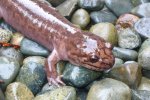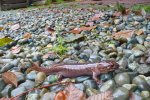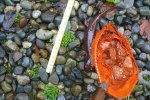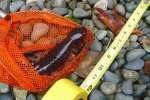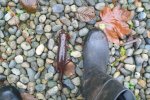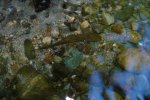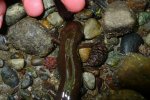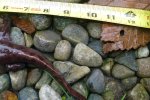Your welcome guys!
Chinadog,
The ones that are lighter brown with some mottling are terrestrial but the ones that are darker and solid brown are larvae. the pic of the one in the stream is a quit small larvae. Dicamptodon are similar to tiger salamanders but are limited to western coast regions of the united states. Dicamptodon are debatably the larges terrestrial species in the world, so it was quit a privilege to find the two terrestrial adult females, both of which were 11 inches long! Unfortunately it is illegal to keep Dicamptodon where I live.
Also some may become reproductively mature and still stay in the larvae stage, this is called neotony. In fact it is more common to find the neotones than the terrestrial adults. I was lucky enough to find these two terrestrial females guarding there eggs in the well that we get our water from! Thanks for the comments guys, I'm actually kind of surprised that so many people replied because it seems like nobody likes Dicamptodon anymore to be honest. :happy: -Seth
 -Seth
-Seth
